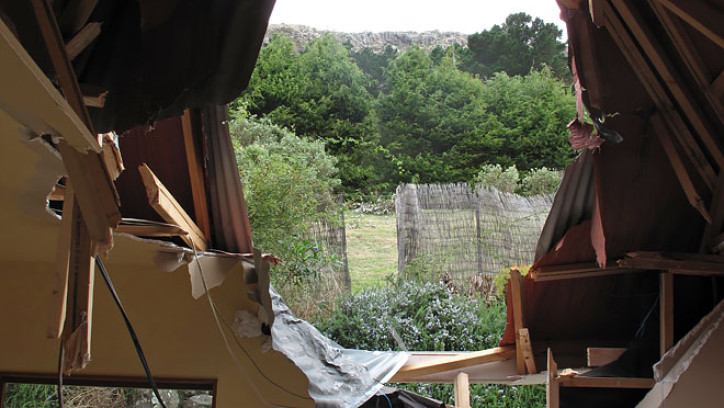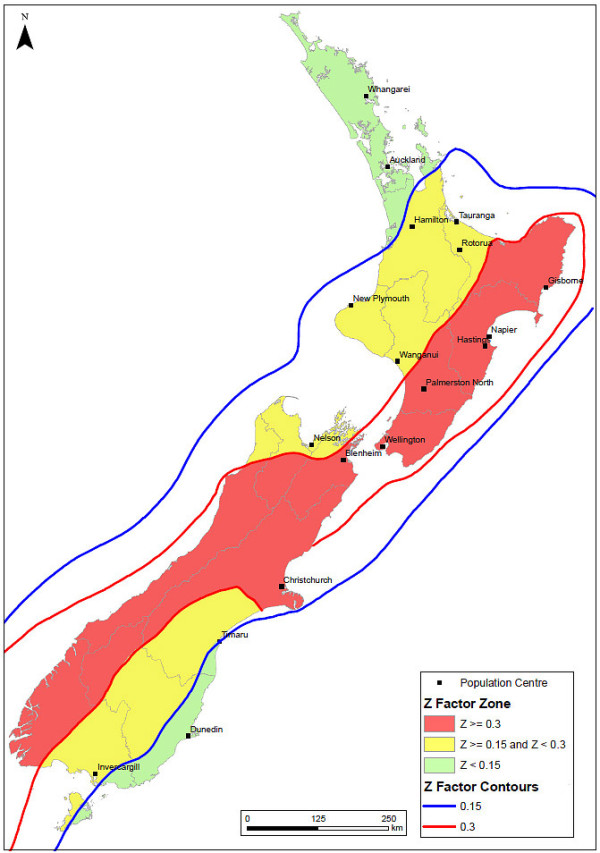Building a more resilient home
Last updated: 9 August 2023

Building a more resilient home can give you and your family peace of mind during a major event such as an earthquake or power outage. There are a number of options you can consider to make your home more resilient.
Earthquakes
We live in a country where earthquakes occur. All parts of New Zealand experience shaking from earthquakes – some more than others. Their severity will vary depending on location and the ground conditions at any particular site.
House design
Get professional advice on your house design – your designer or engineer will consider the seismic zone your property is in and the ground conditions of the site as part of the process of designing a building or extension to ensure it meets the Building Code. Your house needs to comply with the Building Code in order to be consented and signed off by your council.
Building Code compliance has further information on Building Code requirements.
Liquefaction
Riverbeds, reclaimed land and silty soils are often prone to liquefaction during earthquakes. Check with your local council to see whether the property you are looking at has been classified as being at risk of liquefaction.
When building a home on liquefaction-prone soils, there are special requirements depending on the liquefaction risk and severity for the particular site. This may require special ground works and/or specifically engineered and constructed foundations, which can add significant cost to a build.
Building beyond the Code
You can choose to build a house that exceeds the minimum requirements of the Building Code, which could suffer less damage in a major earthquake. This will generally cost a little more but will provide peace of mind. After a major event, it could be the difference between being able to remain in your house or having to move into temporary accommodation during repairs or a rebuild. Talk to your designer or engineer about your options.
Reduce the risk of damage to house and contents
If you have or are purchasing an existing house, there are some steps you can take to reduce the risk of damage to the house and contents in an earthquake. Check out EQC's website to find out what to look for to improve your home's – and your household's – resilience to earthquakes.
TIP - Fix. Fasten. Don't forget
The Toka Tū Ake EQC website has useful information: Be prepared.
Earthquake-prone buildings
Most residential buildings are excluded from the earthquake-prone buildings legislation, except where the building is two storeys or more and contains three or more household units, for example apartments.
Is the apartment building earthquake prone?
If you are looking at buying a unit in an existing apartment block, you should find out about the building's seismic performance. You could:
- check if the building has an existing assessment by an engineer
- check if the building has been classified as earthquake prone and has an EPB notice
- contact an engineer for advice about the building’s seismic performance.
You can check on MBIE's EPB Register to see whether the building has been classified as earthquake prone and has an EPB notice. An EPB notice means the building has been determined earthquake prone by the local council and it will require strengthening (or demolition) by a certain date depending on the area's seismic risk.
EPB Register of earthquake-prone buildings
It is important to realise that not all earthquake-prone buildings have been identified. A council in a low seismic risk area, such as Auckland, is not required to finish identifying its potentially earthquake prone buildings until mid-2032, and so some earthquake-prone buildings may not have EPB notices until after mid-2033.
Checking the Register can provide a useful starting point, but shouldn’t replace other pre-purchase checks such as obtaining a LIM and getting professional advice.
Seismic risk areas and time frames has more information.
Even if a building is not determined earthquake prone a body corporate may opt to strengthen a building – particularly if it's assessed as having seismic strength not far above the earthquake-prone category.
Map of seismic areas - indicative only

Disclaimer: This map is based on the hazard factors contained in NZS1170.5:2004 - Earthquake actions - New Zealand and subsequent modifications made after the Canterbury earthquakes.
TIP - Does the apartment building need strengthening?
Check with the body corporate to see if strengthening is required – an EPB notice may have been issued by the local council but only if the building has already been determined earthquake prone. However, remember the time frame differs for each council depending on the area's seismic risk, and some EPB notices will not be issued by councils until after mid-2033.
Even if the building is not determined earthquake prone, ask the body corporate if it intends to do strengthening work, and whether a seismic assessment by an engineer has been carried out or is planned. It may be useful to find out what percentage of New Building Standard (NBS) it achieves.
You will need to know how much your share of the strengthening work will be so you can budget for this.
Users of earthquake-prone buildings has more details.
Flooding and erosion
Extreme weather events such as floods, cyclones and storm surges are increasing as a result of climate change. There is also the risk of tsunami after a major earthquake. Coastal, riverside and flood plain areas are most vulnerable to these hazards.
TIP - LIM reports and your site
Ask the local council about flood and erosion risks in the area. Some councils have flood maps on their websites. Known flood risks, water courses and stormwater drainage areas can also be found in Land Information Memorandum (LIM) reports – it's highly recommended that you get a LIM before you buy a site.
If you are considering or own a site next to a stream or creek, or the coast, there will be restrictions on how close you can build, and how far above ground your home will need to be.
You may choose to build your home further away from flood zones, and/or higher up to avoid damage to your home and property.
Check if there are potential erosion risks with your local council.
It may also be worth getting an engineer's report, particularly if the section has moderate to steep slopes, or the area is prone to erosion, land subsidence or rockfall. You can help to reduce the amount of erosion and subsidence on your property through the smart use of shrubs and trees on steep slopes and the banks and beds of waterways. Check with your local council to see which varieties they use on land they maintain.
Designing for your climate has more information on flood and erosion risks.
Extreme weather
Some sites are more vulnerable than others to high wind, erosion, and inundation depending on a combination of topography, location and soil types.
Wind zones
You can check with the local council to find out which localised wind zone the property is in. Localised effects can mean that neighbouring properties have different wind zone classifications.
The level of exposure can influence the design and structure of any home or extension you build on the site. For example, homes need sufficient bracing and fixings to withstand strong winds. High winds may also influence the shape/structure of the roof and the most suitable types of windows and doors and their placement.
Stormwater management
Large areas of impermeable surface, like roofs and concrete, result in runoff. Increased amounts of pavement and roofs in urban areas can contribute to flash flooding as stormwater runoff enters waterways after a heavy rain event.
To counteract this, some councils encourage the use of permeable types of paving, such as porous concretes or gravel, and the use of swales and plantings to reduce the amount of runoff and slow the passage of water into waterways.
Some homes or developments will not have ready access to stormwater drains, and may require stormwater retention tanks. These collect water from the roof and drains before slowly releasing it onto the open ground where it is absorbed.
These are often used alongside rainwater tanks. For more about this, see Collecting and using rainwater.
More tips on building resilience
Which construction type is best for your site?
Features of your site, such as ground conditions or steep slopes or high wind zones may affect the type of construction you choose.
Construction systems has more useful information.
Tune into your environment
Whether you are building or renovating consider the site’s landforms and waterways to make your building as resilient as you can.
Working with site landforms and waterways has more information.
Off-grid electricity options
Generating your own electricity can ensure your supply is secure when the local line supply fails. For both rural and urban properties, 'micro-generation' of electricity may be an option, ranging from solar, wind and hydro to traditional diesel generators.
Generating your own electricity has more information.
Before buying – things to consider regarding natural disasters
Homebuyers on the EQC website has further information about what you should consider before buying a house in relation to natural disasters.